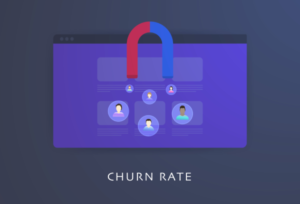When your customers’ success is clearly driven by your services, your customers have a strong incentive to keep using them. This means that your customer success team can play a key role in generating revenue and promoting growth.
In a recent Custify webinar, we had the opportunity to explain the customer data ecosystem and how to leverage revenue data to create meaningful customer success metrics. We also shared our tips on how to use the data you collect to grow your revenue and scale your business.
Read on for an overview of the key points from our session.
Customer satisfaction does not equal revenue
Customer success teams that focus purely on customer satisfaction often end up essentially performing the same role as customer support. They simply respond to queries rather than actively looking for ways to improve the business’ bottom line.
It doesn’t help that they often have to work with data that is incomplete, lacks detail, and/or is out-of-date.
Putting all this together means that an important opportunity for growth ends up being overlooked.
What customer success teams should actually do
Customer success teams should fit in between sales and customer support. That means their core activities should include: onboarding, success planning, driving adoption, health monitoring, retention, upselling, and cross-selling.
Many customer success teams, however, focus on onboarding, health monitoring, and retention. They ignore the activities that promote expansion. These depend on, or are enhanced by, revenue data.
NB: In a mature SaaS, 70–90% of revenue comes from retention and expansion. Without revenue data, it becomes very difficult to achieve either of these.

Creating customer success metrics from revenue data
There are six key customer success metrics you can measure through revenue data. These are:
- Customer lifetime value
- Churn rate
- Expansion of monthly recurring revenue
- Reactivation of monthly recurring revenue
- Average revenue per unit
- Customer retention costs
Let’s take a closer look at each of these.
Customer lifetime value (CLV or CLTV)
Customer lifetime value is the revenue you expect to generate from customers throughout the whole time they use your services. It effectively translates the effectiveness of all customer-facing efforts into a single metric.
CLV shows the financial value of fostering customer relationships. It, therefore, provides a guideline on how much money can be spent retaining each account.
Churn rate
Churn rate can go by various names. These include revenue churn, monthly recurring revenue (MRR) churn, and logo churn. At the end of the day, however, all of them relate to how much business you’ve lost. This can be measured in customers and/or revenue. Revenue loss typically includes downgrades as well as closed accounts.

Expansion of monthly recurring revenue
Expansion MRR relates to your success in generating additional revenue. Typical ways of doing this are by encouraging the customer to:
- add more seats
- buy additional services
- upgrade their plan
- expand their integration
- buy additional products
Reactivation of monthly recurring revenue
Reactivation of MRR measures your success in winning back lost business. Every time you achieve a reactivation, you should look at the reasons behind it. If you are successful in achieving high MRR, then there are likely to be opportunities for you to target churned clients actively. You might also be able to target your competitors’ clients.
Average revenue per unit
This is the average amount a single customer generates for a business over a given period, usually a month.
ARPU is calculated by dividing the total revenue in a given period by the (average) number of customers in that same period. It’s important in activities such as segmentation, understanding user personas, pricing AB testing, and general expansion strategy.

Customer retention costs
Just as it costs money to acquire new customers, it can also cost money to retain and grow existing customers. Once you know what these costs are, you’ll be able to budget for them.
?
Gathering data is all very well, but it only has value if you use it. Here are 7 steps you can take to convert your business intelligence into revenue.
Acting vs. reacting
Customer success teams should focus on analyzing data and proactively engaging customers by encouraging them to solve problems they might not have realized they had. This can only be done when customer success teams can leverage a good data strategy.
Customer success teams should not just be reacting to problems a customer raises. These should be directed to customer support.
Implementing custom offboarding
Implement a system to understand why customers are leaving. Then use this information to guide your recovery and churn-prevention strategies.
You could supplement this automation with human outreach for your highest-value customers. Ideally, this would be done by phone to show a really personal touch.

Improving segmentation
Effective customer success depends on effective customer segmentation. This can be based on MMR, revenue potential, lifecycle stage, and potential for churn.
It’s essential that customer success teams are able to identify four key groups of customers. These are VIPs, core customers, non-core customers, and potential customers.
In general, you should focus your resources on VIP customers and potential customers. The former brings the most value to your business. The latter could increase their value to your business.
Core customers you should aim to keep happy. You should also try to acquire as many as you can. Non-core customers should generally only take up a very small percentage of your resources.
Using automation in upselling and cross-selling
When done properly, automation can be a very effective way to upsell and cross-sell. Essentially, you need to monitor your customers’ activity and cross-reference that with your offering.
For example, if you detect that a customer regularly performs an activity manually, then , so it appears to be personalized to them.

Using automation in fighting churn
There are multiple ways you can leverage automation to fight churn, both voluntary and involuntary.
Given that a lot of involuntary churn is caused by payment failures, it makes sense to implement intelligent dunning (payment retries).
Measures to prevent voluntary churn include:
- Optimizing onboarding to ensure adoption
- Implementing lifecycle tracking and automated outreach per stage
- Setting custom offboarding playbooks to recover lost clients
Building/improving metric dashboards
No matter what tool you’re using (BI tool, customer success platform, etc.), that ability of your CST to look at the overall health of your entire customer base, zoom in on certain customers and/or customer segments and then identify things that can go sideways, is extremely important.
Your customer success team can answer the questions around churn cases and help you prevent certain unpleasant situations that customers can be affected by.

Give the right people the right data and tools to do the right job
Hire customer success managers who understand (or can learn) to act on data. Give them the data they need. Empower your customer success team to use the data in the way that their knowledge and experience suggest. This will be much more effective than trying to create a playbook of default solutions for different situations.
At the same time, equip your CSMs with whatever tools you can find that will help them to perform their roles with maximum effectiveness and efficiency. This allows them to focus on areas where they add value instead of routine administration.
To see all our tips from the webinar as well as our answers to audience questions, watch the entire session here.
